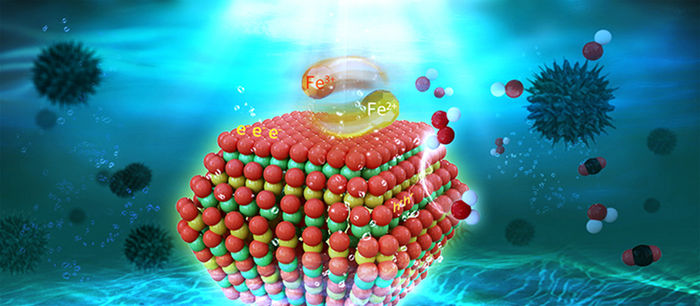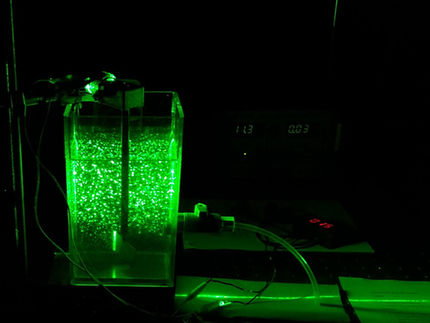Researchers propose new coupling strategy for organic wastewater treatment
Advertisement
A joint research group led by Prof. SUN Chenglin, Porf. WEI Huangzhao and Prof. LI Rengui from the Dalian Institute of Chemical Physics (DICP) of the Chinese Academy of Sciences (CAS) has developed a new coupling strategy of photocatalytic water oxidation and catalytic wet peroxide oxidation (Photo-CWPO) for efficient organic wastewater treatment. This study was published in Applied Catalysis B: Environmental on August 17.

Researchers propose new coupling strategy for organic wastewater treatment
DICP
CWPO technology is a kind of advanced oxidation process for advanced treatment of organic wastewater using hydroxyl radical (·OH), which is generated from hydrogen peroxide oxidation catalyzed by Fe2+. Nevertheless, low utilization efficiency of H2O2 and difficulty in iron ions cycling lead to high cost and indirect energy consumption, which limits its further large-scale application.
In the proposed Photo-CWPO strategy, efficient circulating of Fe3+/Fe2+ ions was achieved through Fe3+ ions reduction by photogenerated electrons, and meanwhile, photogenerated holes were used to degrade organic pollutants.
The researchers used decahedron BiVO4 photocatalyst to realize efficient circulating of Fe3+/Fe2+ ions with selectivity of ~100%, owing to the unique spatial photogenerated charge separation between different facets of the BiVO4 crystal, which inhibited the formation of iron sludge in the traditional CWPO process.
H2O2 species could be generated via a two-hole-involved oxidation process of H2O on {110} facets of decahedron BiVO4 crystals during the Fe3+ reduction process on the {010} facets, which could replenish the H2O2 consumption and fully utilize both photogenerated electrons and holes for degradation of pollutions. This strategy achieved a much higher total organic carbon removal rate in the coupling system than CWPO process.
"The Photo-CWPO strategy could be applied to mineralize various organic pollutants and showed great universality and stability," said Prof. SUN.
"We have applied this strategy for the treatment of wastewater from coal chemical industry, methanol to olefin industry and unsymmetrical dimethylhydrazine industry, all of which showed good treatment efficiency," said Prof. WEI.

































































